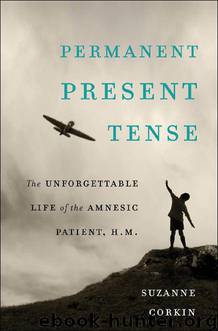Permanent Present Tense by Suzanne Corkin

Author:Suzanne Corkin
Language: eng
Format: mobi, epub
ISBN: 9780465033492
Publisher: Basic Books
Published: 0101-01-01T00:00:00+00:00
Nine
Memory without Remembering II
Classical Conditioning, Perceptual Learning, and Priming
From the mid 1980s through the late 1990s, members of my lab and I expanded our thinking and efforts to investigate the nature of learned behavior. In a broad theoretical context, we designed new experiments to unravel the different cognitive and neural mechanisms that account for nondeclarative memory. As we have seen, Henry was able to unconsciously acquire new motor skills. We also found that he could successfully perform other nondeclarative memory tasks. In our studies of classical conditioning, perceptual learning, and repetition priming, Henry demonstrated what he had learned through his performance of the tasks and not through conscious declarative memory. His proficiency indicated that these forms of unconscious learning, like motor learning, occur in brain circuits outside the medial temporal lobes. Henry played a major role in the development of thinking about each of these kinds of nondeclarative knowledge.
During this time, my colleagues and I came to realize Henry’s limitless worth as a research participant. We continued to be amazed at how many different contemporaneous scientific findings could be related to, or strengthened by, further examining him, and our research with Henry was certainly a boon to my lab’s reputation. Although our publications describing his results made up only 22 percent of our total output, these articles were, and continue to be, high profile and widely cited.
Classical conditioning is a learned behavior that capitalizes on a reflex, such as salivation, a kneejerk, or blinking. This form of nondeclarative learning has been for many decades a valuable tool for research in animals and humans. In experiments using classical conditioning, a neutral item, such as the sound of a bell, is paired repeatedly with another item, such as food, which reliably produces a reflex, such as salivation. Eventually, the sound of the bell itself elicits the reflex response. When the subject salivates in response to the bell, we know that during the multiple presentations of the bell with the food, the animal has learned to associate the two.
The Russian physiologist Ivan Pavlov discovered classical conditioning in the early 1900s while studying digestion in dogs. His technique for eliciting this phenomenon capitalized on a simple reflex: when an animal has food in its mouth, it salivates. Pavlov ingeniously observed that a similar reflex could be activated by the smell of the food, by seeing the person who delivered the food, or even by the sound of the person’s footsteps. The dogs learned that these sensory cues meant that food was on the way. In Pavlov’s experiments, his assistant rang a doorbell just before the dogs received their food. After being exposed repeatedly to these paired stimuli—the bell and the appearance of food—the dogs salivated when they heard the bell, indicating they had learned to associate the sound with food.1
Establishing links between items and emotions is a popular strategy for the advertising industry. Picture an ad for a Caribbean resort dominated by beautiful, smiling couples taking sunset strolls on the beach, swimming with tropical fish, and enjoying massages.
Download
This site does not store any files on its server. We only index and link to content provided by other sites. Please contact the content providers to delete copyright contents if any and email us, we'll remove relevant links or contents immediately.
Hit Refresh by Satya Nadella(8351)
When Breath Becomes Air by Paul Kalanithi(7285)
The Girl Without a Voice by Casey Watson(7276)
Do No Harm Stories of Life, Death and Brain Surgery by Henry Marsh(6346)
A Court of Wings and Ruin by Sarah J. Maas(6135)
Hunger by Roxane Gay(4241)
Shoe Dog by Phil Knight(4194)
Everything Happens for a Reason by Kate Bowler(4079)
A Higher Loyalty: Truth, Lies, and Leadership by James Comey(4047)
The Rules Do Not Apply by Ariel Levy(3924)
Tuesdays with Morrie by Mitch Albom(3853)
The Immortal Life of Henrietta Lacks by Rebecca Skloot(3838)
How to Change Your Mind by Michael Pollan(3693)
Millionaire: The Philanderer, Gambler, and Duelist Who Invented Modern Finance by Janet Gleeson(3585)
All Creatures Great and Small by James Herriot(3532)
Elon Musk by Ashlee Vance(3465)
Tokyo Vice: An American Reporter on the Police Beat in Japan by Jake Adelstein(3451)
Man and His Symbols by Carl Gustav Jung(3336)
The Money Culture by Michael Lewis(3300)
